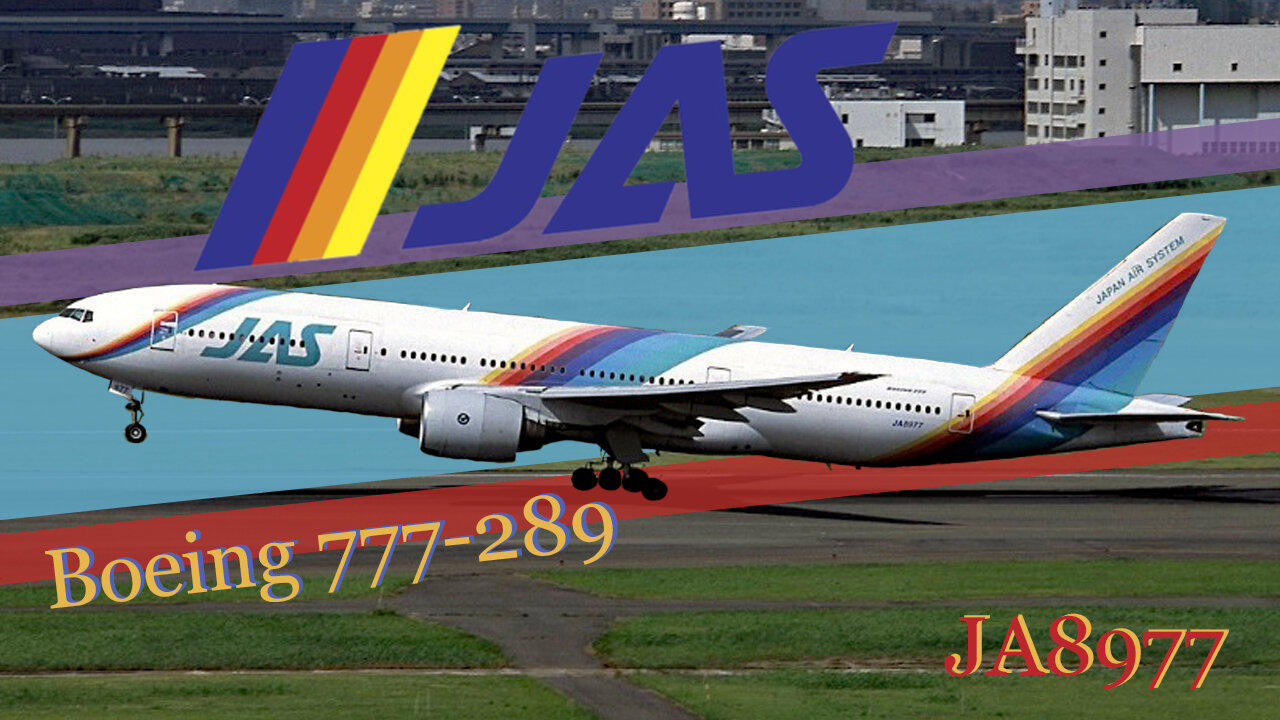Premium Only Content

Aviation Enthusiast's Dream: Spotting this Japan Air System Boeing 777-289 in Action (JA8977)
Hey there aviation enthusiasts, welcome back to our channel! Today, we've got a fascinating topic that's going to take us back in time and high up in the skies. We're talking about the iconic Japan Air Systems Boeing 777-289, registered as JA8977. So, buckle up and get ready to soar through the history of this remarkable aircraft!"
Before we dive into the specifics of this airliner, let's set the stage by talking about its operator, Japan Air Systems, which formed in 1988 from Toa Domestic Airlines, well after the merger between Toa airways and Japan Domestic Airlines in 1971, eventually becoming a homegrown Japanese airline that focused on connecting domestic destinations. It aimed to provide a seamless travel experience for passengers within Japan's diverse landscapes.
Now, let's talk about the aircraft that stole the show – the Boeing 777, a true marvel in aviation history. The Boeing 777, introduced in the mid-1990s, was a game-changer with its incredible range and fuel efficiency. It became a favorite among airlines worldwide, thanks to its advanced technology and passenger comfort.
This particular Boeing 777-289 variant took its maiden flight in October 23, 1996, showcasing Boeing's commitment to innovation and excellence. Delivery to Japan Air Systems took place later that same year. With a wingspan of nearly 200 feet, it is a sight to behold on any runway.
What made this airliner stand out from the crowd? Let's take a look at its striking features. The first thing most people will notice is the unique livery paint scheme on the aircraft. This livery design was part of a design contest held by Japan Air System, and won by a young man going to a secondary school near Chitose Airport. Equipped with two, Pratt & Whitney 4000 series turbofans each producing77,200 lbf or 343 kn of power, making for efficient, smooth and reliable flights.
With a seating capacity of around 440 passengers in a one-class configuration, it was a workhorse for domestic routes, but it’s range of over 5,200 nmi or 9,700 km allowed it to fly to far off nations if needed. This airplane’s journey took it to the skies above Japan, connecting cities, shaping the nation's air travel landscape."
It was primarily used for domestic routes, making it a key player in linking major Japanese cities like Tokyo, Osaka, and Sapporo, with it’s quick speeds of up to 511 kn or 945 km/h. This not only facilitated travel but also contributed to economic growth and cultural exchange.
But as they say, change is the only constant. This plane’s story took a turn in the early 2000s. In 2002, Japan Air Systems merged with Japan Airlines (JAL), marking a significant shift in the aviation industry. This merger paved the way for fleet restructuring and brand consolidation.
As time marched on, this airplane faced a new chapter. With evolving industry demands and a need for modernization, JAL made the difficult decision to retire certain aircraft types, including this aircraft. After twenty four years of service in Japan, the aircraft was purchased for service with the newest iteration of Eastern Airlines. It flew with them for two years, and is now acting as a spares and repair parts hull at the Kansas City International Airport.
-
 LIVE
LIVE
The Jimmy Dore Show
1 hour agoJeffrey Sachs: The US Is Netanyahu’s Puppet! Here’s How War w/ Iran Will Start! w/ Omali Yeshitela
12,543 watching -
![GrayZone Warfare: NightOp [GAME GIVEAWAY!] - #RumbleGaming](https://1a-1791.com/video/s8/1/s/1/R/D/s1RDv.0kob-small-GrayZone-Warfare-NightOp-GA.jpg) LIVE
LIVE
LumpyPotatoX2
1 hour agoGrayZone Warfare: NightOp [GAME GIVEAWAY!] - #RumbleGaming
542 watching -
 LIVE
LIVE
WeAreChange
2 hours agoAliens?! Pentagon Shoots Down Iranian Mothership Drone Narrative
2,927 watching -
 1:06:50
1:06:50
Dr. Drew
8 hours agoRoger Ver, Jan 6ers, Ross Ulbricht: Who Should Trump Pardon First? w/ Robert Barnes & Aaron Day – Ask Dr. Drew
21.6K2 -
 11:56
11:56
Tundra Tactical
2 hours ago $0.24 earnedWas the UnitedHealthcare CEO Assassination a PSYOP?
1.43K -
 LIVE
LIVE
Sarah Westall
1 hour agoPower of Nocebo and Placebo in Health & Politics. Quantum Energy Advancements w/ Ian and Philipp
368 watching -
 LIVE
LIVE
LFA TV
22 hours agoLee Smith Discusses ‘Disappearing the President’ | Trumpet Daily 12.11.24 7PM EST
292 watching -
 LIVE
LIVE
2 MIKES LIVE
3 hours ago2 MIKES LIVE #154 w/ Spcieal Guests, BRIANNE DRESSEN, DAN SMERIGLIO and ADAM DERITO!
124 watching -
 1:28:46
1:28:46
Redacted News
4 hours agoBREAKING! CIA DEEP STATE PLAN TO STOP TRUMP ACCELERATES WITH FALSE FLAGS TIED TO IRAN | REDACTED
142K262 -
 5:38:59
5:38:59
Dr Disrespect
8 hours ago🔴LIVE - DR DISRESPECT - FORTNITE - FIRST PERSON MODE
208K68